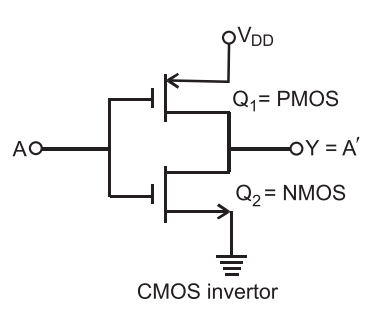Advanced Microprocessors
- Which of the following is used for least power?
-
View Hint View Answer Discuss in Forum
CMOS: Because in CMOS circuit one transistor is always off, the quiescent power consumption is product of supply voltage and leakage current and is typically very low in microwatt range (μW).

Correct Option: C
CMOS: Because in CMOS circuit one transistor is always off, the quiescent power consumption is product of supply voltage and leakage current and is typically very low in microwatt range (μW).

- What is the state of signal at X?
-
View Hint View Answer Discuss in Forum
Don't know or Don't care is the meaning of 'X' in digital.
Correct Option: A
Don't know or Don't care is the meaning of 'X' in digital.
- Which of following logic is fastest?
-
View Hint View Answer Discuss in Forum
Because switching time of logic circuit in ECL is improved by estabilising one of the two states in active region instead of saturation region of transistor. The other state remains in cut-off region. This eliminates the problem of storage time and hence ECL is extremely fast with propagation delay time of 1ns (approx).
Correct Option: B
Because switching time of logic circuit in ECL is improved by estabilising one of the two states in active region instead of saturation region of transistor. The other state remains in cut-off region. This eliminates the problem of storage time and hence ECL is extremely fast with propagation delay time of 1ns (approx).
- The ECL can be used to switch frequency as high as—
-
View Hint View Answer Discuss in Forum
1 GHz. This high frequency is achieved by preventing the cross-coupled transistors from entering into the saturation region.
Correct Option: D
1 GHz. This high frequency is achieved by preventing the cross-coupled transistors from entering into the saturation region.
- A parity check usually can detect—
-
View Hint View Answer Discuss in Forum
A parity check usually can detect only one bit error.
Correct Option: A
A parity check usually can detect only one bit error.

